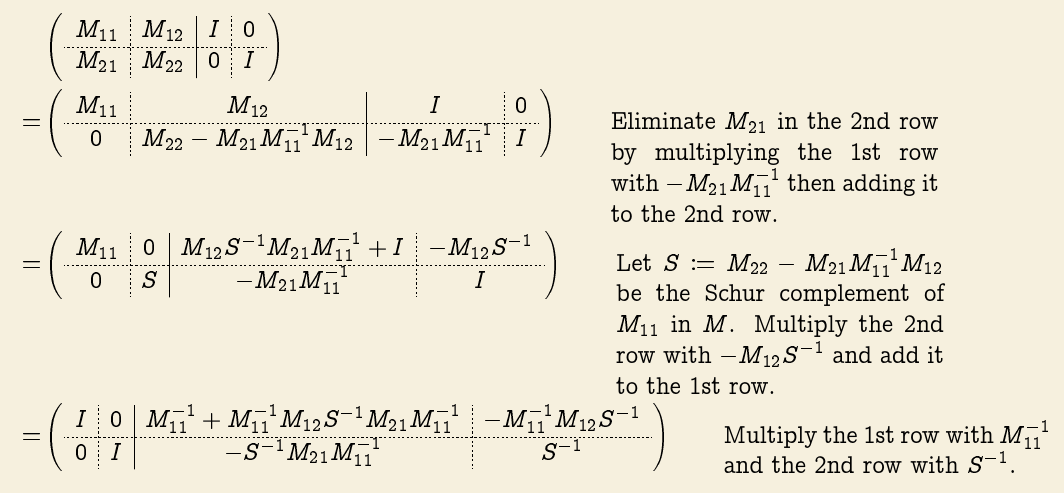Schur complement for inverting block matrices
Let \(M\) be regular (i.e. invertible, as defined in Hackbusch's book [Hie]) and \(M = \left( \begin{array}{cc} M_{11} & M_{12}\\ M_{21} & M_{22} \end{array} \right)\). To calculate the inverse of \(M\), perform the standard manual procedures as below.

Definition (Schur complement) $S := M_{22} - M_{21} M_{11}^{-1}M_{12}$ is the Schur complement of $M_{11}$ in $M$.
Remark The system matrix \(M\) obtained from FEM may not be positive definite. The solution of the whole problem should be split into smaller ones.
Then we have \(x_2 = S^{- 1} (- M_{21} M_{11}^{- 1} b_1 + b_2)\) and \(x_1 = M_{11}^{- 1} (b_1 - M_{12} x_2)\).
Comment The Schur complement method for inverting a block matrix bears the same spirit as that for solving the equations of first degree in two variables.



